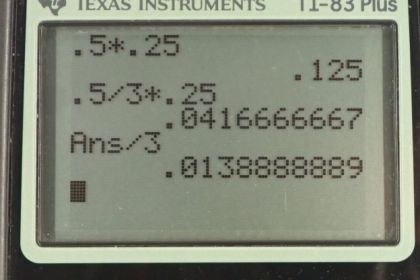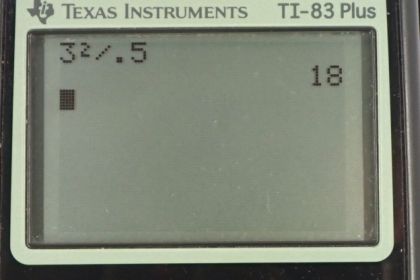Question
A flashing lamp in a Christmas earring is based on an discharge of a capacitor through its resistance. The effective duration of the flash is 0.250 s, during which it produces an average 0.500 W from an average 3.00 V. (a) What energy does it dissipate? (b) How much charge moves through the lamp? (c) Find the capacitance. (d) What is the resistance of the lamp?
Final Answer
Solution video
OpenStax College Physics, Chapter 21, Problem 75 (Problems & Exercises)

vote with a rating of
votes with an average rating of
.
Calculator Screenshots
Video Transcript
This is College Physics Answers with Shaun Dychko. Some flashing Christmas lights operate at a voltage of about 3.00 volts and dissipate an amount of power of 0.500 watts in one flash and the time it takes for a flash is a quarter of a second and so the first question is how much energy is used in a flash? And so we take this power formula, which is energy divided by time, and multiply both sides by t and we get the energy dissipated is the power times time which is 0.500 watts times 0.250 seconds giving us 0.125 joules. Now in part (b), we are asked how much charge flows through the circuit in one flash? Now current is charge flow per time— the rate at which charge is flowing— and we can solve this for Q by multiplying both sides by t and we also know power is current multiplied by voltage in which case, we can solve for I in this equation by dividing both sides by V and then now we have an expression for I in terms of stuff that we know— power and voltage— and we will substitute that in for I in our formula for Q and we have done that here so Q is P over V times t. And so that's 0.500 watts over 3.00 volts times 0.250 seconds giving us 4.17 times 10 to the minus 2 Coulombs. Capacitance is the amount of charge stored on a capacitor divided by the number of volts needed to put the charge there. Now since in part (b), we calculated that there are 4.1667 times 10 to the minus 2 Coulombs moving through the circuit we know that that must be the charge stored on the capacitor because the capacitor supplied that charge. And the average voltage in the circuit was 3.00 volts so we take the charge divided by the voltage and that is 13.9 millifarads is the capacitance. In part (d), we want to calculate the resistance of the circuit. We know the formula for power is the voltage squared divided by resistance and we can solve for R by multiplying both sides by R over P so P cancels on the left leaving us with R there and the R's cancel on the right leaving us with V squared over P equals R. So that's 3.00 volts squared divided by 0.500 watts which is 18.0 Ω.
Comments
For part D, 9V/.5W=18ohms, not 10. I believe the answer for D is 18ohms, is this correct?
I got 18 as well
This video was updated on Jan. 16th, 2024.




